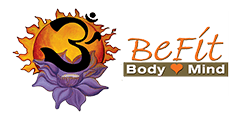Download a guide to this pose. (PDF)
Paschimattanasana A, B, & C – Paschima means “west” or “hinder” and refers to the backside of the body, Uttana means “intense stretch” = Intense West Stretch.
The seated poses of Primary Series are about internal cleansing. The standing poses work externally on the body to prepare your body to go deeper into the seated poses. Forward bending postures detoxify the abdominal organs–it is the pressure of your abdomen pressing on your thighs that help to squeeze toxins out of the organs, so it is ok to bend your knees when forward bending to get this benefit. Forward bending postures also relieve tension and induce relaxation.
Technique:
- Sit up tall on sitting bones in Dandasana, legs extended pushing through your heels (if your hamstrings are tight bend your knees so you can sit up tall), toes moving toward shins–lift sternum and extend your spine out of pelvis but keep your ribs tucked in and chin down.
- Inhaling fold forward from your hips and catch your big toes with your first two fingers, extend your spine sliding your bottom rib toward your knees–it is ok to bend your knees to catch your toes if necessary.
- Exhaling round forward moving your forehead toward your knees. Drishti is toward your feet. If you are flexible and your head is close to your legs relax your neck and allow your head to come to your knees or shins, if your head is far away from your legs–do not allow your head to just hang down, instead keep your neck in line with your spine, chin slightly tucked and gaze toward feet.
- Slide your shoulder blades down toward your hips to keep length in your spine and your shoulders down. Slightly contract the front of the thighs (quadriceps) to stimulate reciprocal inhibition, a mechanism within the body that causes the opposing muscle to relax when one muscle contracts– thus contracting your quadriceps makes your hamstring relax!
- Lift mula bandha! If your knees are bent try to straighten them if possible while maintaining rib cage/thigh contact.
- Hold for 5-8 deep slow breaths, this is position A.
- Please note, excessive rounding in the back can create back pain if you suffer from disc related injuries–if you have back pain due to disc problems pay attention to forward bend in a way that feels good to you.
- Inhale look up extending your spine, catch the outer edges of your feet (again ok to bend your knees if you need to) pressing your thumb onto the big toe tendon–pushing in with your thumbs as you pull with your fingers.
- Inhale head up again, keep your hands where they are or if you can, clasp your hands beyond your feet, exhale your chin to your knees or legs again lengthening your spine by sliding your chin closer to your feet if possible. Hold 5-8 breaths.
- Inhale come up, exhale cross your legs, inhale pick up and jump back for vinyasa.
Note: It is important to remember the Mula Bandha in this pose, contracting mula bandha while forward bending helps move apana (downward flowing prana or energy) upward to meet prana vayu or upward moving energy. This movement of energy increases agni, the digestive fire improving digestion and removing disease from the body.
- Massages the abdominal organs and stimulating circulation and digestion–improving digestion.
- Helps to eliminate fat around the stomach and remove excess gas.
- Forward bending asana help to detoxify the liver, spleen, lungs, and kidneys so they can do their important role of purifying our blood keeping us free from disease.
- Stretches hamstrings and calf muscles (gastrocnemius and soleus) and back muscles.
- Builds upper back and shoulder girdle strength to assist the stretch without collapsing the torso forward
- Has a calming effect on the whole body and mind.
|
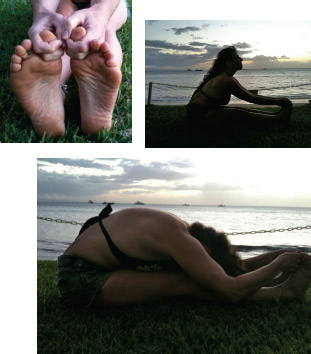 
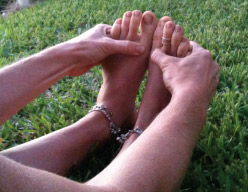
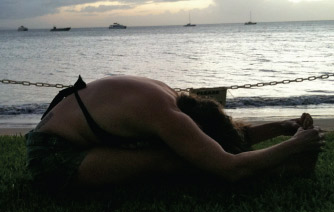
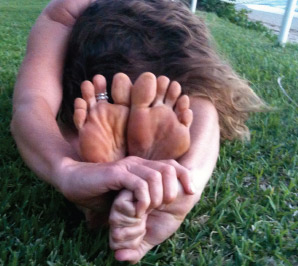
|


